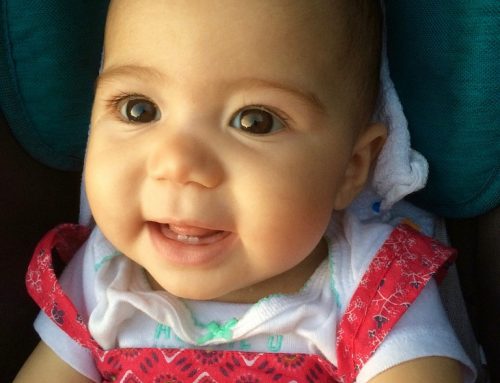Year one of your baby’s life is a tough one, especially for you. Getting the hang of feeding times, sleeping schedules, nappy changes and your own sleep deprivation can prove very challenging. And then, because Mother Nature feels like you don’t have enough on your plate, there are baby growth spurts with which to contend. These quick, short bursts where your baby suddenly appears to have physically grown overnight, and crabbier too. It’s not a fun time for anyone.
Your baby will be expected to triple her birth weight by year one. And increase her height by eight to ten inches. To make this happen, during her year-long marathon of growing from baby to infant, she will take a few short, but fast sprints to get to the finish line. These sprints are what we call growth spurts. After the first year, the growth slows down and returns to a Marathon pace again (clearly Mother Nature took mercy on parents everywhere).
So what are we dealing with here? Let’s find out.
What happens during an infant growth spurt?
You might have noticed your paediatrician examining your child’s physical growth by measuring the height, weight and the circumference of the head. These three numbers increase during a growth spurt. At times, your baby could be on the verge of achieving a milestone, like sitting up unsupported or crawling. At the end of the growth spurt, she is likely to master this skill. Some babies, bless them, can breeze past a milestone. No-fuss, no worry. Then some babies double up as little hell raisers during the spurt.
Signs of growth spurts
Your baby demands more milk
Does your baby holler every time you try to detach her mouth from your nipple? Does it feel like she has permanently set up home on your breast? Brace yourself, you two could be embarking on a growth spurt. Babies get hungrier, as their bodies need more fuel to achieve the extra growth the body is about to undertake. They begin to cluster-feed or suckle for comfort during a particularly testy time.
Disruptive sleep patterns
Your baby could either end up sleeping too much or not sleeping enough during a growth spurt. Some babies turn into hibernating animals, preserving their strength and energy. While others turn into snarling, nocturnal animals, unable to sleep at night or allowing anyone else to. Either way, it’s a sign of things to come.
Show signs of irritability
During a growth spurt, your once amiable baby can get clingy, demanding or irritable. This personality change coincides with the physical changes that are going on in her body. It can’t be easy for her. And she may lash out in frustration (she can do it, you can’t).
How often can you expect a growth spurt?
There will be a succession of infant growth spurt across the first 12 months. The life cycle of a growth spurt could be two days to a week (So hang in there, it’ll be over soon). These are the growth spurt ages:
- 7-10 days
- Two-three weeks
- 5-7 weeks
- Three months
- Six months
- Nine months
These stages are not set in stone. Your child might prefer to follow her own timeline for growth spurts. It’s also possible that one or two growth spurts may be harder on the little one, while the others appear relatively more benign. It’s best to tackle each spurt as it comes. And try not to have any expectations.
For a clearer picture, speak to your paediatrician and figure out what you can expect in terms of your little one’s growth spurts.
What parents can do during this trying time
To help your child through the growth sprint, here are a few ways you can be of service.
Feed on demand
Be ready to nurse your baby at any time of the day. As mentioned before, your child might get ravenous. It’s best to offer her copious amounts of nutritious milk to help through the growth spurt. However, you also need to make sure you’re getting enough water and nutrition yourself. You need to ensure your milk supply can keep up with the demand.
Soothe your baby
Your little one can get irritated and upset during a spurt. Offer enough skin to skin contact, cuddles and soft, gentle soothing to help her relax and calm down.
Light, physical comfort
A gentle massage or soft leg and arm raises could also help your baby feel better. Take your cues from your baby. If she responds well to the physical therapy, indulge her.
Doctor’s checkups
Visit your paediatrician to ensure that your baby’s behaviour is due to a growth spurt, and not any other reason. Remember, some of these symptoms listed above could also happen during teething or illness. So no harm in checking with an expert.
Conclusion
Your baby’s growing pains should cease by the first year, following which the growth rate won’t be quite as mercurial, and order is restored. Except when puberty hits, and then growth spurts will resume. But that is a story for another time.






Leave A Comment